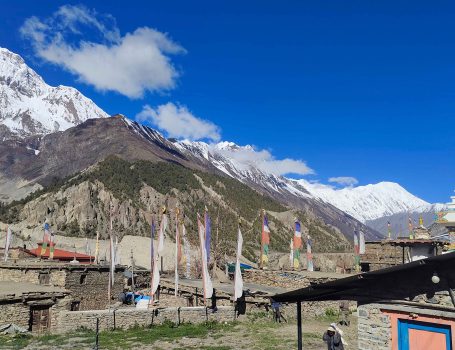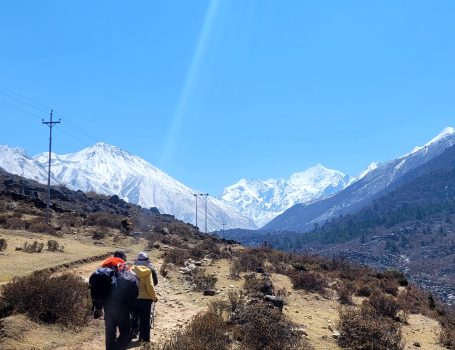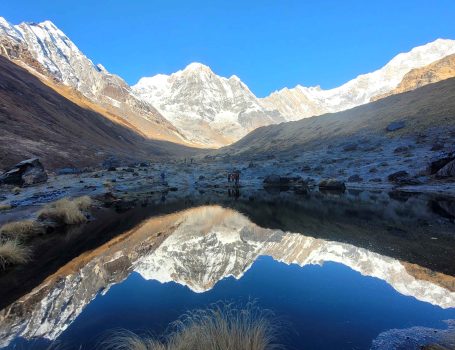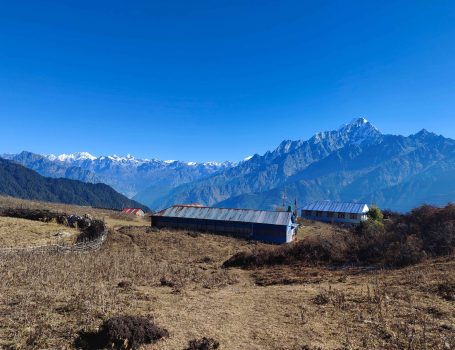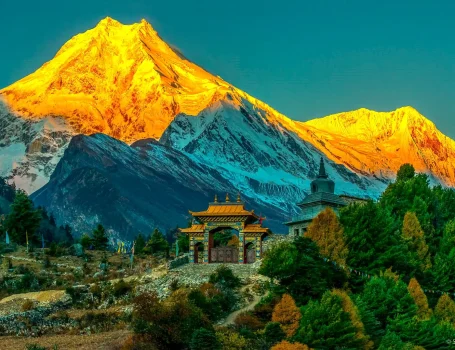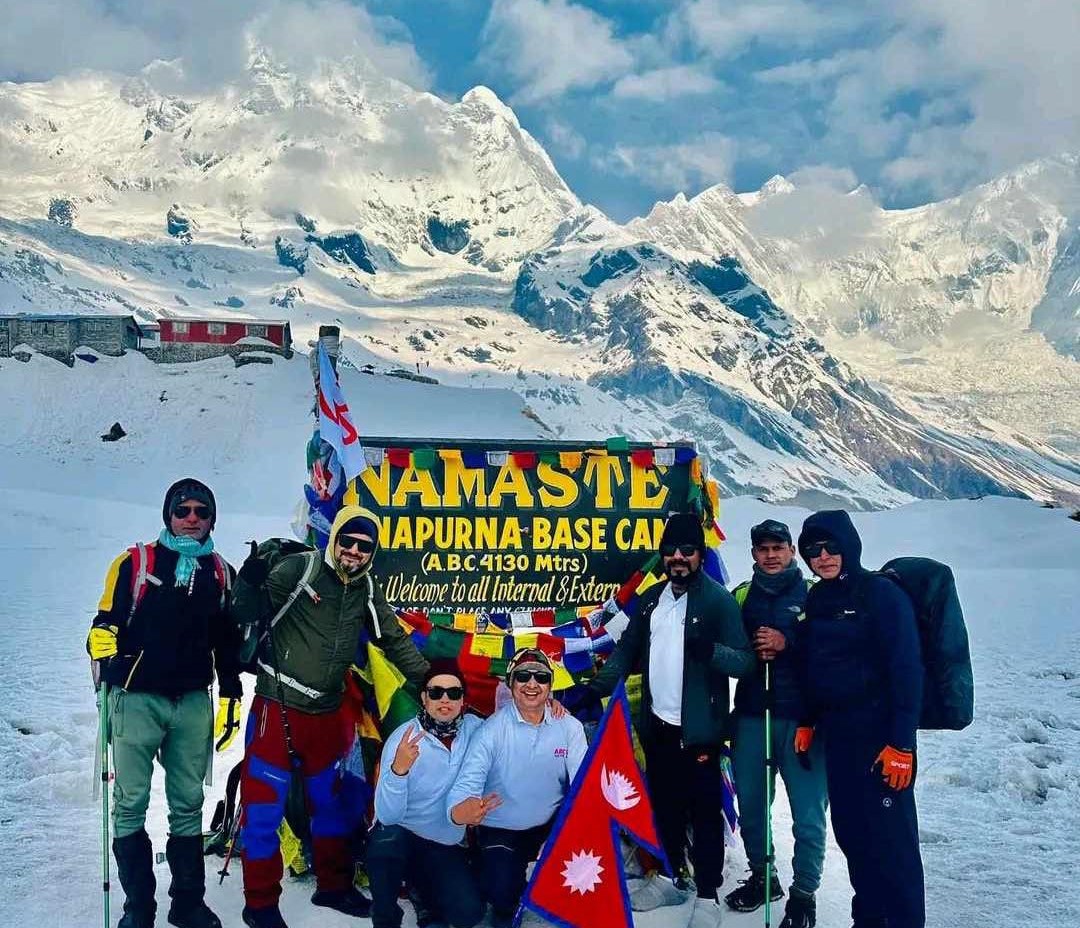Everest Base Camp Trek
1010
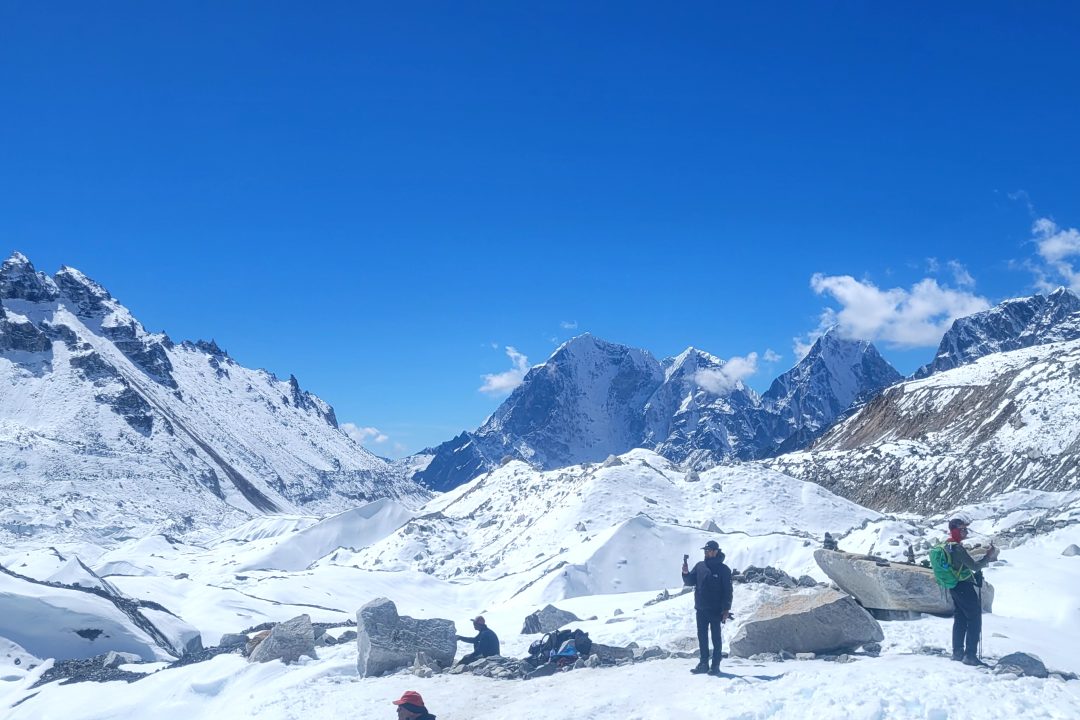
Trip Facts
- Duration 14 Days
- Trip Difficulty moderate
- Max. Altitude 5550 m
- Start and End Kathmandu - Kathmandu
- Best Time Autumn & Spring
- Accommodation Tea House/ Lodge
Trip Highlights
- A scenic flight to Lukla will provide the first glance of our magical adventure.
- We will ascend to the Base camp of Mt. Everest at a staggering 5364m from the Khumbu icefall.
- Sunrise hike on acclimatization day from Dingboche offers unparalleled views of Everest and Nuptse.
- Exploring the Sherpa Culture villages and enchanting towns with glimpses of the mountains
- We will visit the Tengboche Monastery to be enchanted by the Buddhist pilgrims in a serene setting.
- Our acclimatization hike offers 360-degree vistas of Makalu, Lhotse, and Ama Dablam, showcasing the Himalayan achievement.
- Our interaction with the local life of Sherpa Villages and towns all over the Everest region enriches our Himalayan region.
Overview
The 14-day trek to Everest Base Camp is meticulously crafted by All Nepal Excursion. This journey is one of Nepal’s most adventurous yet rewarding journeys in the lap of the Himalayas. The journey will start with the early morning flight to Lukla, if weather permits. The itinerary is designed for all types of adventure lovers with little experience in hiking. The acclimatization days are secured for a safe and secure trek without any hassle or danger of altitude sickness during the trek. You can choose to either rest or have an optional hike to Hotel Everest View. The hike offers our first glimpse of Everest from afar.
After the rest day, we will ascend further, and rightly so, it tests our endurance and mental stability. The high-altitude treks like this can heavily impact your endurance, so it is important to gradually ascend on the steep climbs. We will reach Tengboche after the steep ascent. So visiting Tengboche’s serene monastery will refresh you a bit. Furthermore, ascent will take us to the Everest Base Camp, Kala Patthar, and Dingboche, significantly providing more achievement and adventure for this trek.
We at All Nepal Excursion ensure a safe and secure environment during all our treks and tours with expert guides to navigate you. We are dedicated to your enjoyment and adventure without compromising safety. All Nepal Excursions is dedicated to your successful trek, from top to bottom, sharing our insight to brighten up your journey. We promise to provide seamless services during your trip to Nepal.
Why Everest Base Camp trek?
This is the GOAT of trekking with the most famous adventures. The major attraction, Everest Base Camp, at a staggering 5,364 meters, provides a sense of achievement for your adventure. The view of Mt. Everest from the rock of Kala Patthar provides unparalleled views, showcasing the natural beauty of Nepal. Geographically, the Khumbu Valley features rugged trails, glacial moraines, and Himalayan vistas. The flora and fauna are also rich with the most endangered vegetation and wild animals, with snow leopards being common in the area. The Sherpa villages and their divine culture draw you to the attraction of this region. Although this trek is adventurous and rather difficult, this is equally rewarding in terms of experiences. We recommend that traveller trek to the Everest Base Camp at least once in their lifetime.
Best Season to travel
Spring (March to May)
The season of spring is the most liked season for the Everest voyage. The expedition is mainly open for this season, so expect the trail to be more crowded. The season provides majestic views with the calm nature, even at the highest altitudes. The average daytime temperatures here this season are between 5 to 15 degrees Celsius. Rhododendron blooms at its peak throughout the season to make your journey more soothing and enchanting.
Autumn (September to November)
Autumn is another popular season for the trek to Everest Base Camp. The season flexes its cool air, equally distributed days and nights, and the most clear mountain views from afar to closer. We will get to enjoy the post-monsoon greenery and vibrance of local Sherpa culture. This season is perfect for the culturally connected trekkers as the local festivals like Mani Rimdu fall under this season. Dashain and Tihar also fall this season, so there will be a lot of festival vibes this season.
Other Seasons
We often do not recommend other seasons(winter and monsoon) as they are not worth the adventure. However, for the adventure-seeking audience, there is a lot to offer in these seasons. Winter is snowy and stiff for trekking as the trail is fully covered with snow that is as thick as 1 foot on the higher altitudes. The monsoon isn’t considered safe as monsoon proceeds with the heavy rainfall, making the trail slippery and unsafe to travel here. Also, there are no flights during the season, and driving can be risky in the winter.
Trek Difficulties
The Everest Base Camp is considered a challenging adventure as compared to others, and fairly suitable for experienced and fit hikers. This trek is a rewardingly difficult experience. We will start our trek from Lukla(2,840m) to the highest point, Kala Pathar( 5,550 m), in a mere 7 days. Therefore, we have scheduled two days of rest and acclimatization for you to adapt to the low oxygen level of higher altitudes. The teahouse accommodation will provide warm beds and food items for you to stay warm. Guidance from All Nepal Excursion will help in believe we can conquer this rewarding Himalayan journey.
Altitude Sickness
Altitude
The highest we will climb on this trek is Kala Patthar at 5,550m. place has the lowest level of oxygen. We will start from the altitude of Lukla(2840m), so ascending gradually is very important.
Acclimatization
We have scheduled two acclimatization days in this trek. One in Namche(3,440m) and the other in Dingboche(4,410 m). During the acclimatization days, we will get time to adapt to the thin level of oxygen.
Precaution
We have to stay hydrated, drink 3-5 liters of water every day, and monitor the symptoms of mild altitude sickness like nausea, headaches, and vomiting. These symptoms should not be ignored, or else you can have a serious illness.
Basic Treatment
For the mild altitude sickness, like nausea, vomiting, we will rest, drink water, or take painkillers or Diamox for an emergency cure. If the situation worsens, we will descend to a lower altitude and seek more treatment, like a helicopter evacuation if needed.
Rescue
All Nepal Excursion relies on the emergency helicopter evacuation if the situation of emergency situation arises. We will ensure you a swift response and rescue. However, travel insurance is mandatory for situations like this.
Travel Insurance
Travel Insurance is very essential for high-altitude trips and treks like this. Travel Insurance helps us to safeguard the unforeseen events. The travel insurance should cover medical emergencies, including altitude sickness and emergency helicopter evacuations. Insurance also provides security for your hard-earned money, so it is important to check and consult with your travel agent properly. All Nepal Excursion will help you find the best policy.
Additional activities
- We can immerse ourselves in Sherpa culture and witness the monks chanting in this spiritual place with Ama Dablam’s view.
- We explore the vibes of Namche Bazaar and buy trekking gear, souvenirs, and local handicrafts like prayer flags.
- We can browse Thamel’s bustling streets for Nepali pashmina, trekking supplies, or souvenirs before or after the trek.
- We will engage with locals on our rest days by being engaged in their daily chores and practices.
